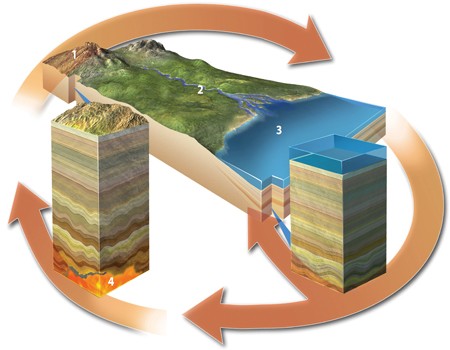Give a brief overview of the terrestrial carbon cycle. Include the source of carbon that enters terrestrial ecosystems, how carbon moves through ecosystems, and how carbon ultimately leaves ecosystems
Explain how part of this cycle is believed to contribute to global climate change.
Plants take up CO2 from the atmosphere and then incorporate the carbon into sugars and tissues. Animals then eat plants and gain organic forms of carbon that can be used for energy and for building tissues and molecules such as proteins and DNA. When animals and plants die, their tissues are metabolized by decomposers, and the partially degraded biomass (especially from plants) is then deposited into soils, and eventually the material fully decomposes. At each stage along the way, some organic molecules are broken down, and carbon is released back to the atmosphere as carbon dioxide. The use of fossil fuels (organic materials buried long ago) causes stored CO2 to be released to the atmosphere. This is occurring at very high rates and is contributing to global warming.
You might also like to view...
Ninety-eight percent of the earth's crust is composed of only ________ elements.
A. 5 B. 17 C. 23 D. 8
What is usually the ultimate cause of the stresses and pressures that build up in rocks and produce
earthquakes? What will be an ideal response?
________ are pyroclastic materials ejected from volcanoes that are larger than 64 mm (2.5 inches) in diameter
A) Volcanic ash B) Lapilli C) Volcanic bombs D) Pillow lavas
Which of the following best indicates a location where sediment is transported?
A. location 1 B. location 2 C. location 3 D. location 4